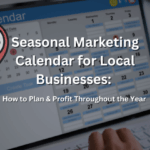As a web surfer you are already very familiar with retargeting, from a consumer’s perspective. It’s quite simple, we’ve all had the experience where we search on Google or Amazon for a particular product, view the product, close the browser, log into our Facebook, and then lo and behold! We see an ad in Facebook for the very thing we just looked at! (Guitars, clothing, electronics, anything). It reminds us of that initial interest we had for that product. And it continues to ‘follow’ us around.
Ads like this have a greater chance of being clicked on because we know for sure the consumer has some level of interest (since he searched for it). They have a higher CTR (click through rate) than traditional ads, as on traditional ads you are just showing everyone the same thing… and many of them may not be interested in it at all.
But with retargeting you are only showing ads to people who have searched for that product. Therein lies its brilliance.
How do you get started?
Setting up a retargeting ad campaign can be a bit tricky. Its best to start off with Facebook’s retargeting ad platform.
There are several different ways you can harness the power of retargeting, in various different applications. Let’s take a simple example.
1) You have a page on your website where you are promoting a specific product. It could be something physical, or a download like an e-book.
2) In the Facebook retargeting platform, you put in the URL for this page. On this step we are creating a ‘trigger’. Meaning every time someone visits your website’s product page, a ‘cookie’ will be placed on their computer, (temporary internet file), this is how Facebook will ‘know’ what ad to display when the user goes to his FB page.
3) You create your Facebook Ad for that product. Choose a title, description and image, as well as type of audience.
4) You put Facebook’s ‘cookie’ code on your specific product page.
5) Then… a user finds your product page (by Google search, or even other ads), leaves the page, goes to his Facebook, and sees an ad for that same product… reminding him. He will continue to see that ad. You can choose how long you want the cookie to last (2 weeks, or more, etc)
Conclusion
Of course for retargeting to work you have to have traffic to your website to start with. This can be organic traffic from social media or SEO. Or you can simply have Google ads. Regardless of that, retargeting allows you to stay in the mind of potential buyers.






